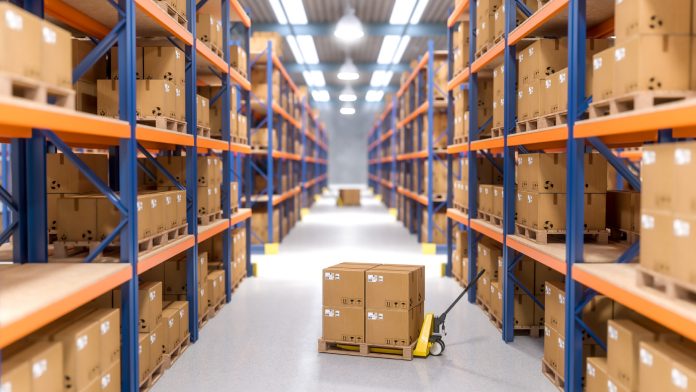The Dos And Don’ts Of Setting Up Your Restaurant Kitchen

Setting up a restaurant kitchen is complex, requiring time and effort to ensure that all the necessary components are in place. To help simplify this process, certain dos and don’ts should be considered when planning for such an endeavor.
This article will provide an overview of these guidelines, focusing on their relevance to establishing a successful restaurant kitchen with the help of Lex’s plumbing. It’ll also discuss how following these rules can make the transition from idea to reality smoother and more straightforward.
What You Should Do When Setting Up Your Restaurant Kitchen:
Here are three great examples of what you should consider improving kitchen safety, efficiency, and productivity:
Find The Right Space
Choosing the right space for setting up a restaurant kitchen is essential in creating an efficient and profitable operation. It must be large enough to accommodate all necessary appliances, furniture, and staff while allowing easy access to utilities such as water, gas, and electricity.
Additionally, space for adequate lighting and ventilation are crucial elements that shouldn’t be overlooked. Finally, the flooring material should suit a kitchen environment by providing non-slip surfaces that can withstand heavy foot traffic and potentially hazardous spills.
Choosing Good-Quality Equipment
Choosing the right space and equipment is essential when setting up a kitchen. When selecting the appropriate equipment for a kitchen, it’s vital to keep safety in mind. Ensure all appliances, tools, and equipment are UL-rated and in good working condition.
Additionally, look for appliances, tools, and equipment designed to conserve energy and water. This may include energy-efficient ovens, stoves, and refrigerators. It’s also best to buy commercial grade grills for your restaurants to ensure maximum cooking and cleaning efficiency.
Lastly, it’s always a good idea to install fire suppression systems, such as a fire suppression hood or a sprinkler system, to ensure safety in the kitchen. Creating a practical kitchen with the right combination of space and equipment that fits one’s needs best is possible. Careful planning will ensure the kitchen is set up correctly to function efficiently for years.
Ensuring Proper Ventilation
Good kitchen ventilation is essential for creating a safe and comfortable working environment. A practical kitchen ventilation system can help remove smoke, odors, pollutants, and excess moisture from the air by providing fresh air circulation.
To ensure good ventilation in your restaurant kitchen, you should install an exhaust fan directly above the stovetop to vent smoke and moisture away from cooking surfaces.
Additionally, installing a range hood over the stovetop to capture fumes and smoke and an in-line fan to reduce odor levels further. It’s also beneficial to open a window or install a window fan for additional fresh air circulation and use a dehumidifier to reduce excess moisture in the air.
Finally, consider installing an air purifier to eliminate any remaining pollutants or odors so your staff can work comfortably and safely in their environment.
With these measures considered, your team can cook quickly, knowing they are in a clean and healthy workspace.
What You Should NOT DO When Setting Up Your Restaurant Kitchen:
Here are three great examples of what you should avoid doing to maintain kitchen safety, efficiency, and productivity:
Don’t Ignore Safety Regulations
Ensuring that all kitchen appliances and fixtures are installed correctly, with the appropriate power source, is vital. This includes ovens, stoves, microwaves, exhaust fans, dishwashers, and refrigerators.
In addition, it’s crucial to create an adequate ventilation system for proper air circulation throughout the kitchen area. All combustible materials should be stored away from sources of heat or flames to prevent any fire hazards. Furthermore, children shouldn’t be allowed access to the kitchen due to safety concerns related to sharp objects and hazardous substances. Kitchen staff must also receive adequate food safety and hygiene training before preparing meals.
Setting up a restaurant kitchen can become much easier with these guidelines in place while providing a safe working environment for everyone involved. By considering potential risks associated with operating a restaurant kitchen, businesses can eliminate unnecessary problems.
Don’t Overlook The Need For Extra Storage
Having enough space to store things is essential when setting up a restaurant kitchen. You can add shelves or cabinets to the walls, countertops, or places you don’t often think about. For example, you can put brackets on the sides of appliances or between cupboards.
You can also use bins or baskets to store things and make them easier to find. Planning and ensuring you use all your space will save you time and help your restaurant run smoothly. It’s also vital to create a designated area for each step of the cooking process, such as a prep area, cooking area, and dishwashing area.
This will help keep the kitchen organized and efficient by ensuring all areas are properly equipped with the necessary tools and supplies. This includes having adequate counter space, utensils, pots, pans, and other cookware. Having the right tools and supplies in the right place will make it easier for your staff to work quickly and efficiently.
Not Considering A Grease Trap
A grease trap is a critical piece of equipment for any restaurant kitchen. Failing to install one can cause clogged pipes and costly plumbing repairs. Grease traps collect fats, oils, and greases from the wastewater before it reaches the public sewer system or septic tank. This helps protect these systems from becoming blocked up with solidified fat deposits.
Furthermore, grease traps reduce foul odors from untreated wastewater entering the sewage system. The size of your grease trap must be determined based on factors such as daily flow rate and the total amount of solids expected in each batch of wastewater.
Additionally, you should ensure that all components are correctly assembled and maintained regularly to prevent issues related to corrosion and sediment build-up over time. It’s also essential to ensure adequate access space around the unit so that maintenance personnel has room to perform necessary services when needed.
Restaurant owners must act with these considerations when setting up their kitchens to ensure the proper functioning of their grease trap systems and avoid unnecessary costs due to blockages or other problems caused by improper installation or inadequate maintenance procedures.
Takeaway
Establishing a successful kitchen in a restaurant is critical for its success. It requires careful planning and consideration of numerous factors, such as finding the right space, selecting suitable equipment, ensuring proper ventilation, adhering to safety regulations, providing adequate storage, and installing a grease trap.
Attention to these details will give restaurateurs an advantage when setting up their kitchens. By carefully considering each of these points before setting up their kitchen, they can ensure that it meets all necessary standards while running efficiently. Doing so will help create a safe and productive environment for employees and customers.
Read Also:














